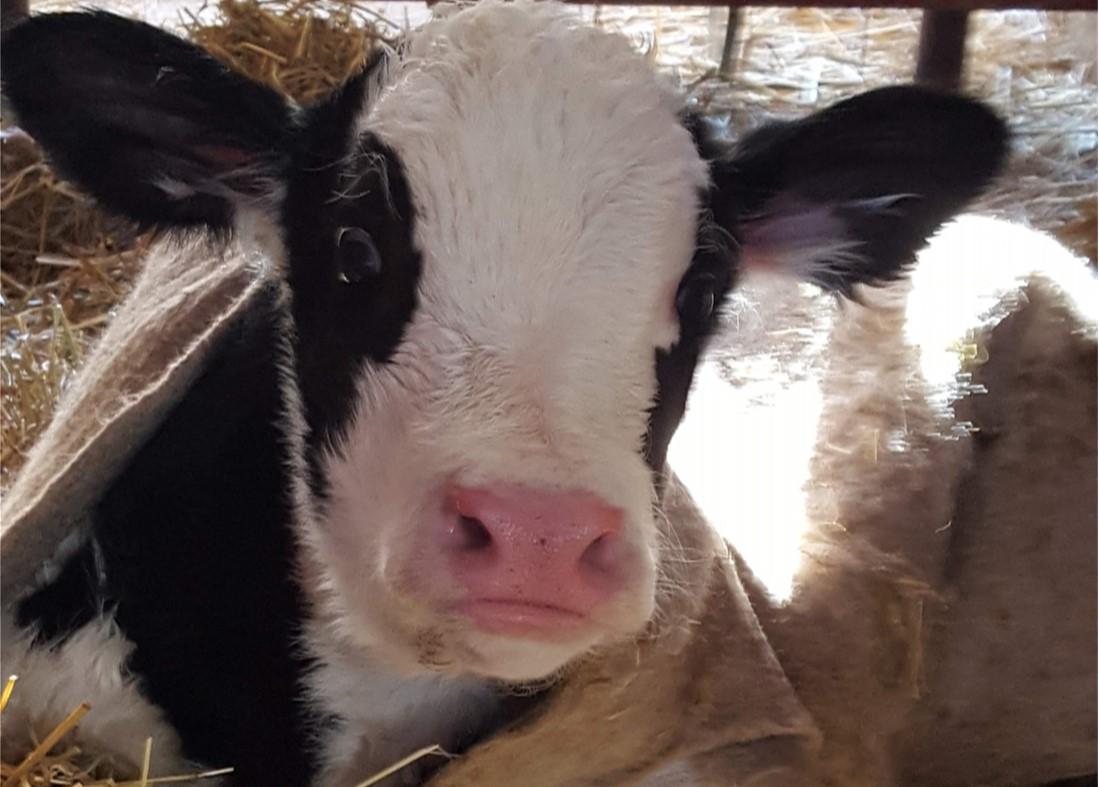Focal point
|
As the temperatures drop, there is more to calf care than putting jackets on them. Winter is always a challenge to calf raisers. We want our animals to have plenty of fresh air, which means caregivers are also exposed to colder temperatures.
Geof Smith, North Carolina State University Professor of Veterinary Medicine, reminds us that protecting calves from the elements while providing comfortable shelter without impeding air quality is challenging. He reminds us the calf lives about two feet off the ground and not up where humans stand, so when evaluating air quality, keep this in mind.
Two of the significant threats to calf health are draft and moisture. Again this is where balance comes into play. We want air movement without a draft in that two-foot space lining space. We also don't want stale air, which can predispose calves to pneumonia.
Deep fluffy dry bedding is essential for calves to maintain their body temperature. Growing calves will be challenged to consume enough nutrients to grow and generate extra heat. The youngest calves are not ruminating, so they cannot generate extra heat like their mothers in the milking string.
“One of the calves' most common challenges in winter is getting enough water—it's hard to drink ice!”
The first thing we can do to assist the calf is to ensure their liquid ration is between 100 to 105°F. This helps calves not only maintain body temperature but conserve energy as well. Cold storage of milk-replacer powder or whole milk is excellent for preservation but needs to be considered before mixing and feeding.
If possible, bring the powder to room temperature before mixing. If you cannot, you will need to use warmer water and take care in mixing properly as cold powder will be more difficult to mix thoroughly. If feeding whole milk, don't forget to warm it to at least 100°F as well.
Next, you will encounter outdoor challenges, which will quickly start cooling the liquid. If you use buckets or bottles, make sure they are warmed. When transporting, protect the liquid in bottles or bulk from the chilly air. Lining your wagon with Styrofoam and covering it with an old sleeping bag is just one suggestion.
Experts at Penn State recommend that the sooner calves start eating grain, the more benefit they will get in generating heat. Anything we can do to encourage starter consumption will positively affect calves' ability to withstand cold temperatures. Offer small amounts of starter during the first week of life, and be sure to have water available to all calves because drinking water stimulates starter intake. In cold weather, provide warm water three times per day for a minimum of 30 minutes to ensure calves have ample opportunity to drink. One of the calves' most common challenges in winter is getting enough water—it's hard to drink ice!
In conclusion, use these suggestions to help maintain calf health and growth during the winter. Check the calf housing to ensure a comfortable environment that reduces heat loss as much as possible. And last but not least, dress appropriately. If you are comfortable, you will be more attentive to the calves under your care.

This article appears on December 21, 2022, in Volume 3, Issue 4 of the Maryland Milk Moos newsletter.
Maryland Milk Moo's, December 21, 2022, Vol.3, Issue 4
Maryland Milk Moos is a quarterly newsletter published by the University of Maryland Extension that focuses on dairy topics related to Nutrition and Production, Herd Management, and Forage Production. To subscribe to this newsletter, click the button below to enter your contact information.